We built a evaporating-hand water clock using a WaterColorBot fitted with a Buddha Board. The Buddha Board is a black board with a gray ceramic coating that becomes transparent when wet, so you can paint on it with plain water to make black marks that disappear as the water evaporates. (And, it fits nicely in a WaterColorBot with the appropriate jig.)
As a clock, once a minute it draws the minute hand, then the hour hand, and finally the outline of the clock face.
As the water evaporates over the course of a few minutes, the old minute hands fade away. It’s a neat effect.
And of course, video:
For the future, it’s also worth considering a digital water clock, maybe using the fonts from Hershey Text. Its straightforward to write the code, but a legitimate concern is how readable it will be. With the “analog” clock face, the fading minutes make perfect sense. But two numbers written on top of each other might be less legible. Perhaps it should use numbers written in different locations around the board? If so, we’re going to need a smaller brush.
A separate question is how practical is the Buddha Board as a long-term clock substrate? Our best guess is “not very.” After maybe 12 hours of total running time, we can already see some surface change to the Buddha Board, in the constantly-repeated outer circle. The Buddha Board isn’t really designed to handle a robot painting the exact same thing day in and day out. Moving the clock position slightly might fix the issue (like an old-school screen saver!), or perhaps it’s worth thinking about water painting on slate instead.
The application RoboPaint Clock BB and source code are available on github.
Special Thanks to Vikram D. for the project idea!




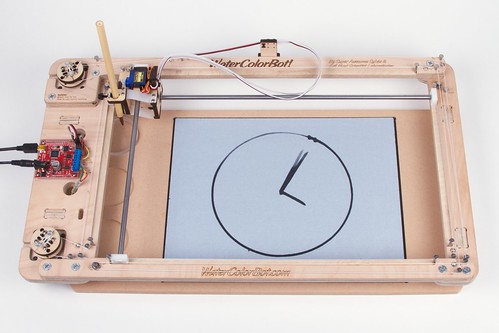
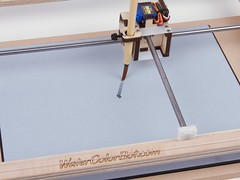
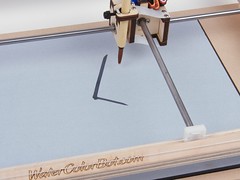
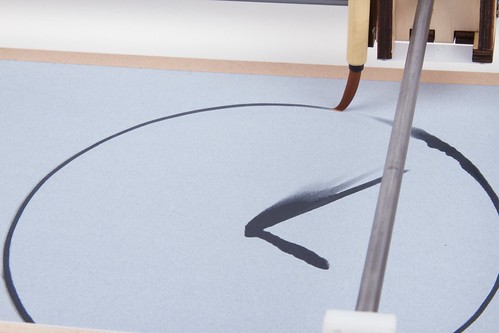
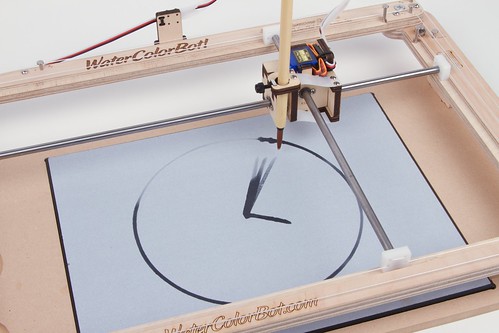
I wonder if distilled water would make a difference in the longevity. Or did you already think if that?
I *did not* think of that. Interesting idea!
You might be able to clean the board with something like white vinegar to get the mineral deposits off. If the surface is ceramic, it should be able to withstand a good deal of abuse. Just make sure the last rinse is distilled water or if you have it, reverse osmosis water. I was my glasses with soap and water, rinse them with tap water and then use RO water to get the minerals off before drying.
Does the ring always begin and end at the angle of the minute hand? If so, nice touch.
Yes it does. :)